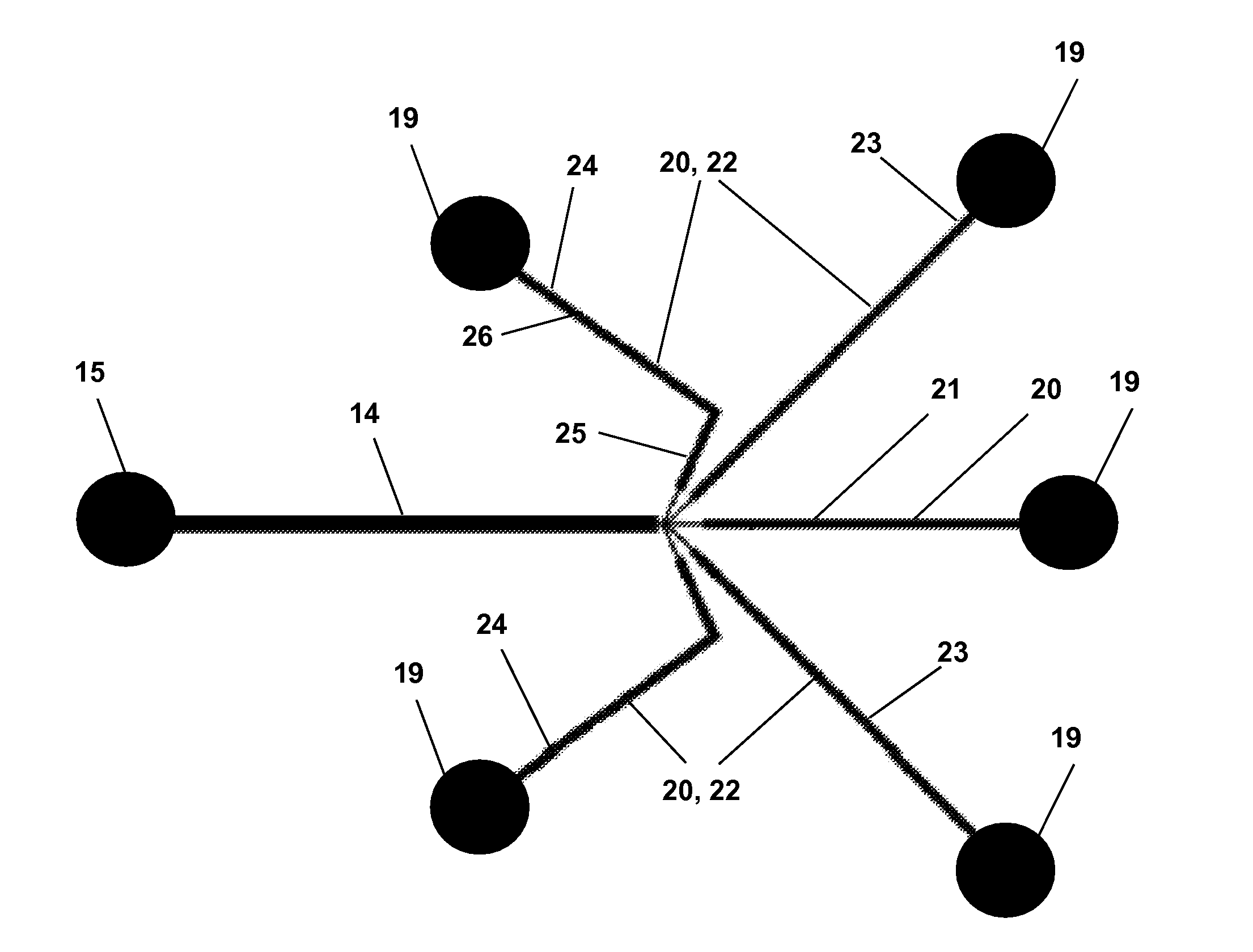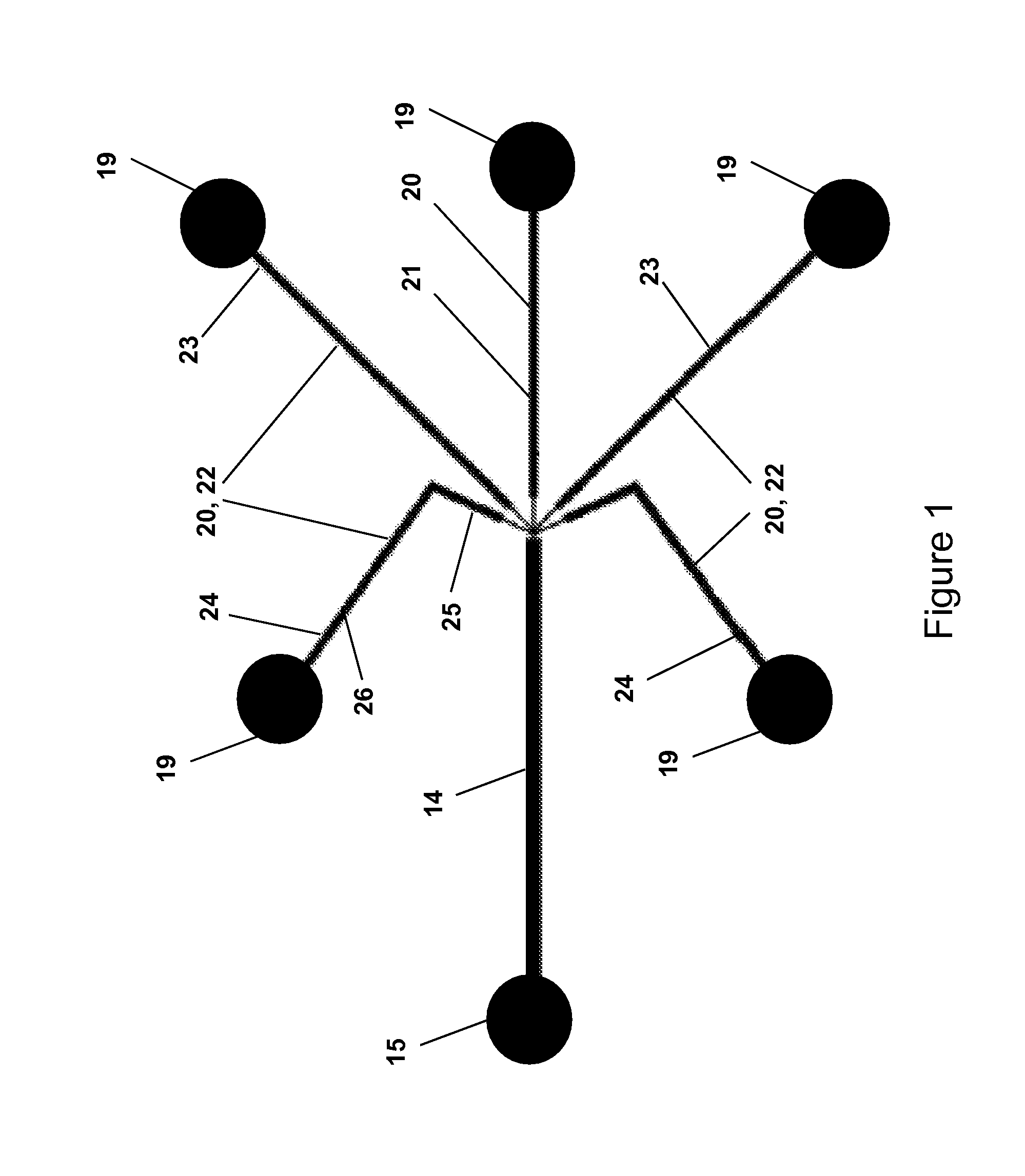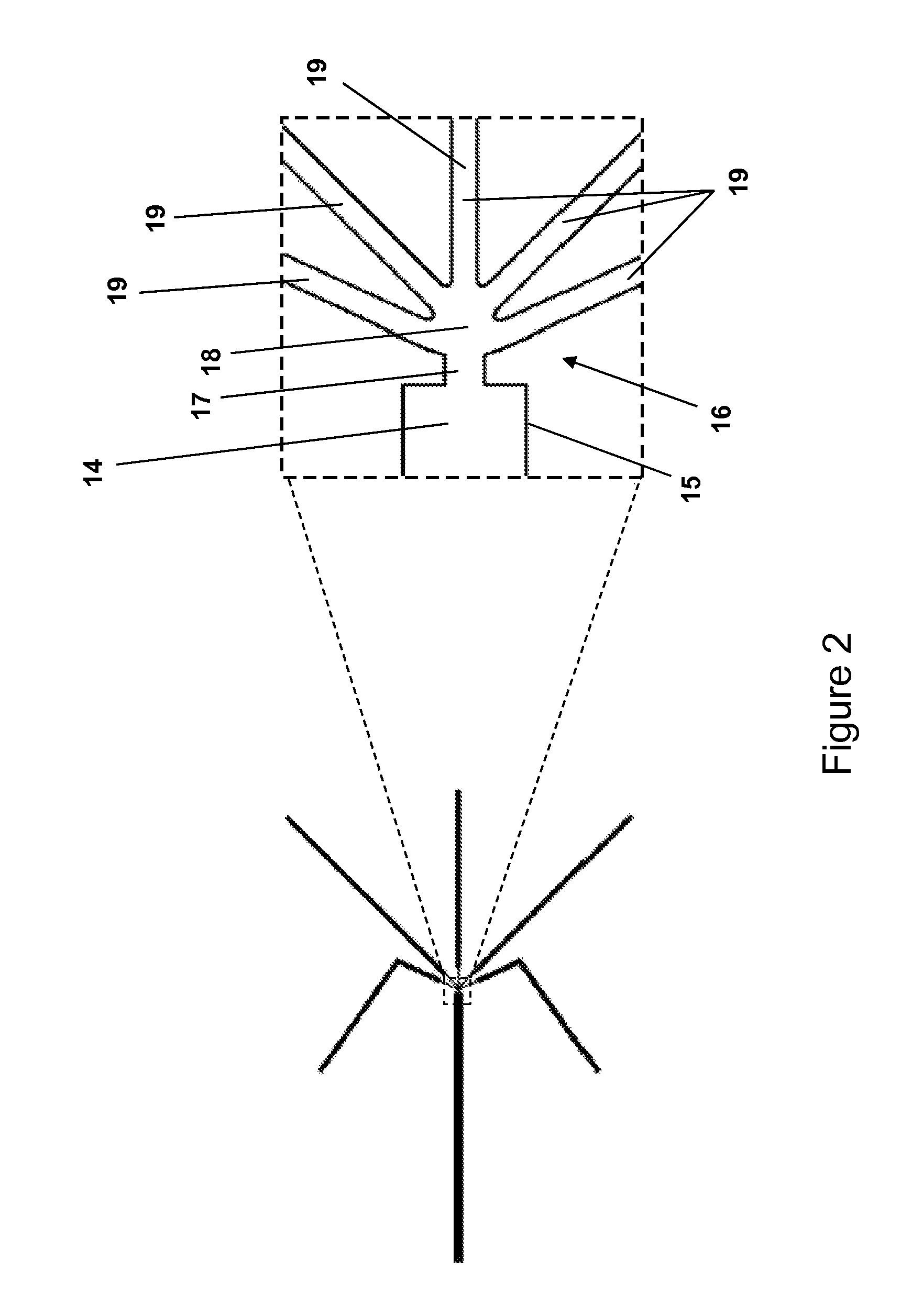Methods, Systems and Apparatus for Size-Based Particle Separation
- Summary
- Abstract
- Description
- Claims
- Application Information
AI Technical Summary
Benefits of technology
Problems solved by technology
Method used
Image
Examples
example 1
Dielectrophoretic Sorting of Polystyrene Beads and Membrane Protein Nanocrystals
[0063]The following example demonstrates the proof of principle of this novel microfluidic device with nanometer-sized beads and shows that numerical models accounting for the transport process at the constriction are in excellent agreement with experiments. Furthermore, the microfluidic device was applied to crystals of photosystem I (“PSI”), a large membrane protein complex consisting of 36 proteins and 381 cofactors. These crystals comprise one of the most challenging samples for any microfluidic sorting device as they are very fragile due to having a solvent content of 78% and only four salt bridges acting as crystal contact sites. Yet, excellent sorting of size-heterogeneous PSI crystal samples was demonstrated using size characterization methods such as dynamic light scattering (“DLS”) and fluorescence microscopy, as well as second order non-linear imaging of chiral crystals (“SONICC”), as a charac...
example 2
Sorting MCF-7 and MDA-MB-231 Cancer Cells
[0095]Numerical simulations of a fractionation design employing two off-center outlet channels and a central outlet channel are shown in FIGS. 10A and B. The two simulations show that two different kinds of cancer cells with small differences in size can be sorted with a microfluidic device. FIG. 10A shows that MCF-7 cells are deflected into off-center outlet reservoirs under positive DEP (>95% relative concentration in these channels), and FIG. 10B shows that MDA-MB-231 cells are focused into the central outlet channel (>95% relative concentration in this channel) under negative DEP. In this case, variability in the cell conductivities is exploited to induce a differential DEP response, as the cell sizes are nearly the same. This model uses cells with different metastatic characteristics, as it has been shown that more metastatic cells (which in this case is MDA-MB-231 versus the MCF-7) exhibit higher conductivities. Equation 2 above shows t...
PUM
 Login to View More
Login to View More Abstract
Description
Claims
Application Information
 Login to View More
Login to View More - R&D
- Intellectual Property
- Life Sciences
- Materials
- Tech Scout
- Unparalleled Data Quality
- Higher Quality Content
- 60% Fewer Hallucinations
Browse by: Latest US Patents, China's latest patents, Technical Efficacy Thesaurus, Application Domain, Technology Topic, Popular Technical Reports.
© 2025 PatSnap. All rights reserved.Legal|Privacy policy|Modern Slavery Act Transparency Statement|Sitemap|About US| Contact US: help@patsnap.com



